Variety and Choice of Japanese baths

Almost everybody knows Russian, Finnish, Turkish baths, but Japanese baths are only gaining their popularity. Nevertheless, the features and traditions of the bathing culture in the Land of the Rising Sun are really noteworthy.
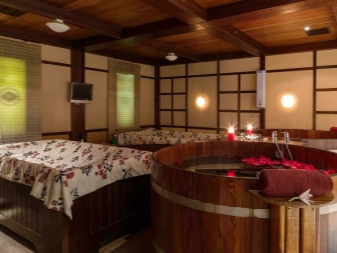
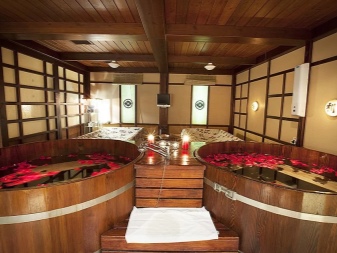
What is it?
The Japanese way of bathing is fundamentally different in that hot water is used instead of heated air and steam. This method of bathing was developed by ancient customs.
- The prohibition on the use of soap. Soap used to be exclusively of animal origin, so its use for hygienic procedures was against the laws of the Japanese religion. At the same time washing did not take place every day, and a thorough cleansing of the body was required, for which they began to use very hot water, the temperature of which for the average European may seem simply unbearable and scalding.
- The climate is harsh. Because of the high humidity and low temperatures in the winter, it was extremely cold in the thin-walled houses of the Japanese. Therefore, people considered bathing in hot water a real salvation.
- The remoteness of the hot springs. The Japanese sauna, a barrel of heated water, was created in the likeness of the thermal springs that used to be used for washing, but were not always located close to the Japanese villages.
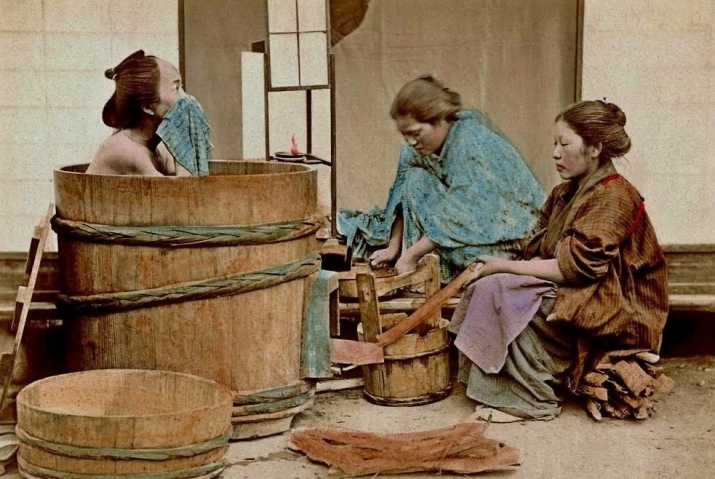
With the Japanese' inherent love of minimalism, the bathhouse setting took on the following appearance: a spacious, well-ventilated room with a large wooden barrel - furako - and a couch to rest on. The usual brooms, hats and similar items are absent there.
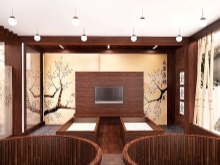
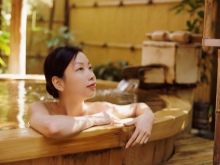
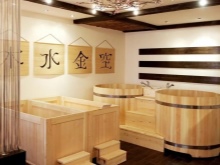
The main purpose of the steam bath is to relax the body and mind, to achieve tranquility, to get rid of anxiety and unnecessary thoughts.
Sequence of procedures
Not only the structure, but also the rules of visiting the Japanese bath distinguish it from others. The sequence of procedures is extremely important, because it is the correct execution of them and creates the desired effect of the steam bath in the end.
Basic actions.
- Washing in the shower.
- Warming up and relaxing foot massage.
- Immersion in a barrel with warm (35-45 degrees) water up to the chest for 10-15 minutes. It is important not to dip into the water with your head, so as not to provoke a bad feeling.
- Rest on the couch.
- Taking a bath of heated (up to 50 degrees) dry sawdust. Duration of the procedure - a quarter of an hour.
- Washing again in the shower.
- Taking a bath with stones warmed up to 60 degrees.
- At the end of all procedures - traditional tea ceremony.
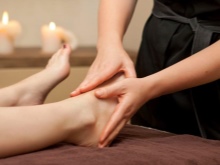

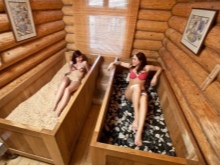
Indications and contraindications
The positive effect of Japanese bath on the human body has been tested for years and clinically proven. This type of procedures is especially indicated for chronic infectious ailments (not in the acute stage), increased swelling, joint problems, respiratory diseases, etc. Japanese-style bathing procedures help to:
- general strengthening of the organism and increasing its resistance to illnesses;
- cleansing and rejuvenation of the skin;
- normalization of the work of internal organs;
- improving blood circulation;
- relaxation and recovery of muscles after exercise;
- Improvement of the general state of health.
- getting rid of toxins and excess fluid from the body.


In order to to make steaming even more useful and effective, in the hot water adding essential oils, infusions and decoctions of herbs, incense. They are chosen individually, depending on what effect must be achieved. Or universal and hypoallergenic additives are used.
Because staying in the Japanese bath produces high temperatures on the body, you can not attend it with some diseases. It is recommended to visit a doctor in advance to get recommendations.

However, the fact that high temperatures are used in the bath can create some restrictions for visiting it. In particular:
- intolerance of too hot water;
- open wounds and skin diseases;
- Exacerbation of viral diseases, high body temperature.
It is also not recommended to go to the sauna for children under 3 years old, pregnant and lactating women.

Overview of types
The designs listed below, as a rule, are not independent types of baths. They are part of a complex, which is considered a traditional Japanese-style bath.
Furako
The main component is a round or oval barrel of large size made of precious natural wood. Usually it accommodates from 2 to 8 people. Barrel must be equipped with an electric or gas stove for heating and maintaining a high temperature of water. In ancient times, stoves were stoked exclusively with wood, so many complexes, to achieve the effect of authenticity, use wood heating. This option is especially suitable when the font is located outside.
With the help of a partition, the barrel is divided into two sections. One is designed directly for bathing and is equipped with seats all around the perimeter. The other is to house the heating element. Sometimes the heater is placed separately on the outside. Another mandatory design element is a wooden lid for a large barrel.
It is not used for steaming, but it protects the water from rapid cooling and debris when there are no visitors in the sauna.
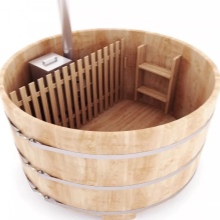
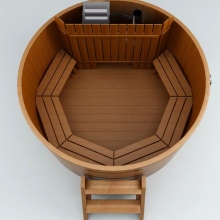

Santo
This is the name of the public baths that are very popular in Tokyo and throughout Japan. They are not mixed. There is always a division into women's and men's spaces. That said, sentos are still great for going there for a family vacation together. Sento is a spacious room with mirrors and not very deep pool filled with water of high temperature - about 50 degrees. Most of the time, the pool is designed for 100 people. Because of the large area and high humidity, baths in this style must necessarily have good ventilation.
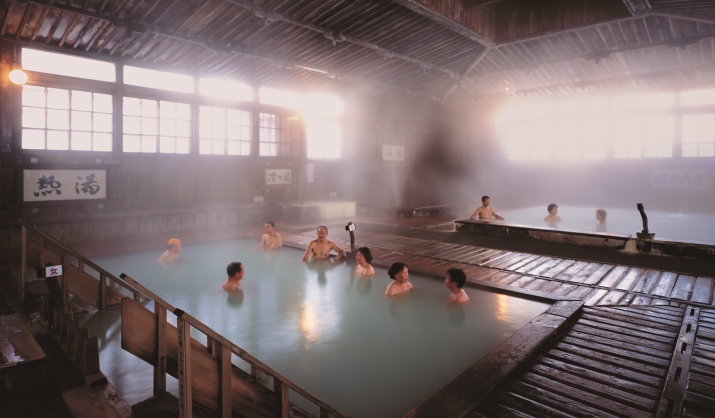
In addition to the room with the pool, there are locker rooms and showers, which must be visited before going to the steam room. And also rest rooms, where you can sit comfortably after water procedures and drink tea.
Interesting fact: originally santo were minimalist baths, which went exclusively to the priests. Only after a while the baths gained popularity and became beautiful and comfortable.

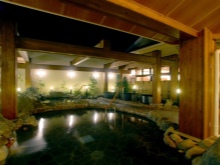
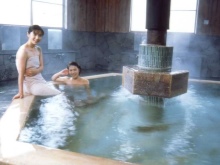
Ofuro
This is a kind of Japanese bath, which is a rectangular-shaped wooden box with heating. Furo are designed for one person, so their size is oriented to the height of the average Japanese. The most interesting thing is the filling of the tub. It is filled with sawdust from natural wood, most often it is oak, larch or cedar. Sometimes essential oils, medicinal herbs, flowers, leaves are added to the bath.
It takes quite a lot of sawdust - it is necessary to fill the box to the top. At the same time part of the filling is renewed after each visitor, because they absorb sweat. If a barrel or swimming pool with water to be no more than 15 minutes, the hot sawdust can lie down to half an hour. The hot temperature starts the processes of sweating, and therefore enhanced cleansing of the body. Pores open, and useful substances from the additives to the sawdust penetrate into the body, effectively healing it.
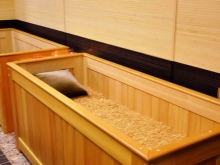
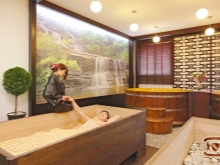
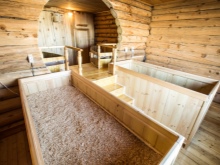
Such baths quickly heal wounds in the skin, promotes visible rejuvenation, getting rid of excess weight and loose skin, tone the body as a whole.
Another option for filling with ofuro is dry hot stones. Unlike sawdust, a person is not completely covered with stones, but is offered only to lie on them with his back for a quarter of an hour. Or roll over on your stomach and place several hot stones along your spine.
For sophisticated visitors, some bathhouses offer baths with heated volcanic ash, which is also known for its positive effects on human health.
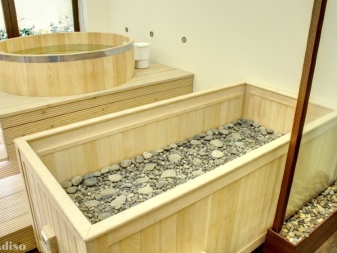
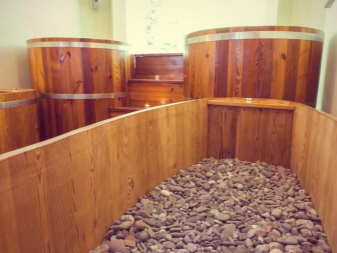
Materials
It is fundamentally important to choose good materials for the bath, because during interaction with water and high temperatures, various substances are released from them and penetrate into the human body. Therefore, It is important that it was useful phytoncides from quality wood, not poisonous chemicals. In addition, low-quality materials quickly deform and fall into disrepair.
The wood should have a medium density for easier subsequent processing and be well dried. It is desirable to choose the most mature wood, as it is less loose and contains more valuable substances for health than boards from young trees.

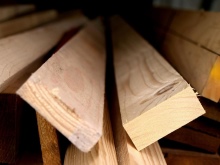
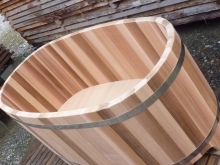
Traditionally for the manufacture of barrels and bathtubs for Japanese baths are used wood of the following species.
- Oak - the most expensive variant, but one of the best. Despite the constant influence of water and temperatures, the oak font will last for decades, preserving its properties and beautiful appearance. Useful substances contained in the wood have a positive effect on the state of the skin and improve blood flow.
- Larch - is a unique material that does not decay from steam and water, but on the contrary, becomes stronger and more durable. At the same time it does not require any special care.
- Ash - is also a strong and durable wood, useful for the prevention and treatment of skin diseases. The only nuance: drying such a tree is not the easiest task.
- Cedar - is famous for particularly valuable essential oils, which are released when heated and perfectly help to cope with any respiratory diseases.
- Siberian pine and linden - are excellent options for making Japanese baths adapted for Russia. They do not heat up too much, are not capricious in maintenance, exude a wonderful fragrance when heated, also useful for the respiratory tract and the general recovery and purification of the body.
For decorating the space and Sento swimming pools they use natural stone and tiles. Since Japanese bathhouses are places of contemplation and relaxation, the rooms are often decorated with decorative natural stones or other natural materials.
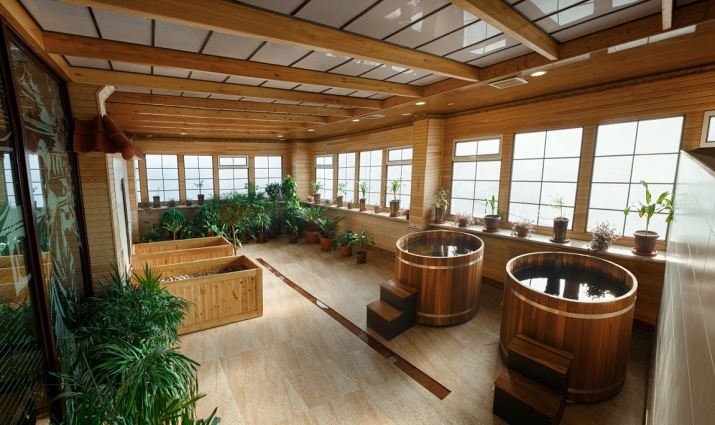
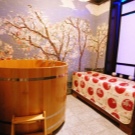
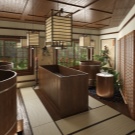
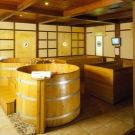
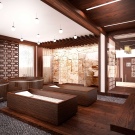
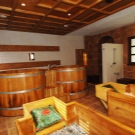
Accessories
In addition to a wooden barrel, bathtub or stone pool, the main component of a Japanese-style bathhouse is a stove. It can be of two types.
- Built-in. Located directly in the barrel itself, but isolated from the part with water by means of a partition. This is the traditional option of placing the heating element, but it has a number of nuances. For example, placing the stove too close to a partition may cause it to become very hot and, as a result, burn. Also, if the stove is a wood-burning stove, you will need to provide space for the chimney.
- Outdoor. This is the most modern and convenient way to place the stove. There is more space for people in the barrel, the furnace becomes easier and safer to maintain.
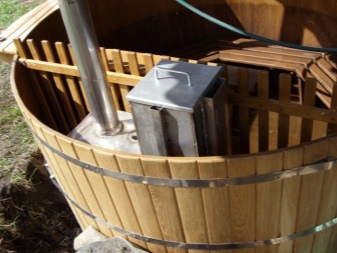
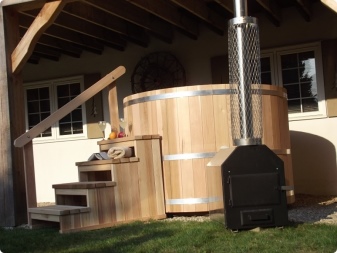
Traditionally, stoves have been wood-burning. Today, however, gas and electric appliances are also used.
It is important that stoves are compact, airtight, and located according to fire safety regulations.
Modern heating systems are becoming more and more convenient to use and are additionally equipped with temperature controllers, remote controls and other useful options.
The set of barrels and baths for the Japanese baths necessarily include thermometers, to clearly monitor the temperature of the waterThe baths are also equipped with thermometers, steps, benches, dividers, lids, and drainage devices. As well as pumps, water purification and disinfection systems, tea tables, etc.
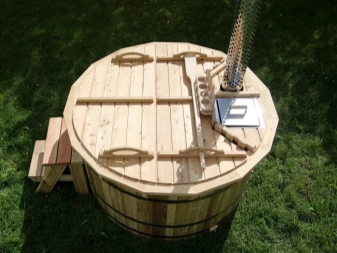
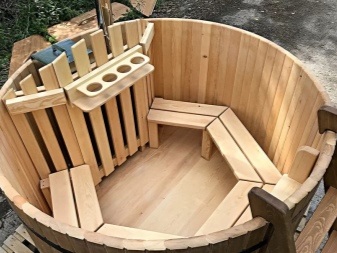
But there are no traditional Russian brooms in Japanese baths.
How to choose?
To choose the most successful model and option for the arrangement of the bath, first you need to decide on the place of its installation, because the size of the container will directly depend on this. Usually, barrels and baths are placed in separate buildings or in rooms that are attached to the house or cottage. It is also possible to install only an outdoor furako barrel in the homestead or even in the apartment.
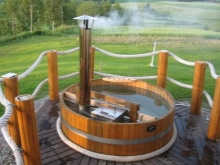
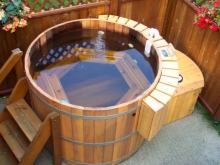
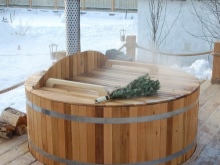
When choosing a font, make sure that the materials are exclusively natural. Quality designs have the appropriate certificates. Wood-fired baths are more authentic, it is better to install them outside. Baths with electric and gas stoves are faster and easier to heat - this option is optimal not only for home use, but also for commercial purposes. It is desirable that the furnaces be made of fire-resistant stainless steel.
Choose the size of the baptismal font according to the number of people who are expected to visit it. We recommend choosing medium-sized barrels. Too large or too small designs are less practical.
If you have never visited a traditional Japanese bath, you should definitely rectify this! Especially since the traditions of the Land of the Rising Sun can be revived even on your own garden plot.
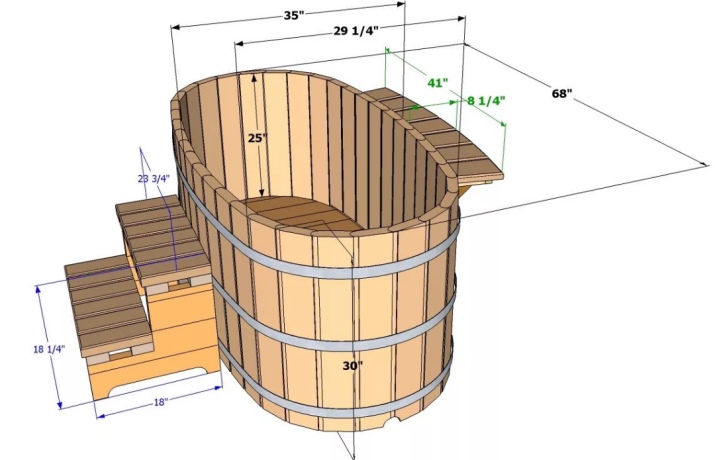
To learn more about the features of Japanese baths see below.




